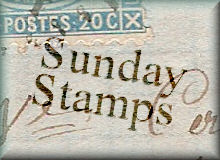The stamps themselves are nice...but the surrounding map image is what really makes this issue so dear to me (and i have to thank my mum again for having purchased this many years ago)
Well, the map is just to give you an idea where Slovenia is in case you hadnt already known...you can even take a glimpse of Macedonia at the bottom..cut in half...
as for the flowers...four of them are featured on these stamps.
the top left one shows the Primula carniolica or the Carniolan Primrose, which is considered as one of the most famous Slovenian plants, first spotted more than two hundred years ago.
The flower has glittering bright green basal leaves , which are smooth and bare and are not speckled with a farinose coating. The soft, red- violet flowers are in clusters, with a sprinkling of white dust at the mouth. It flowers in April and May in shady, damp gorges in rocky fissures and has been protected in Slovenia since 1922, and is also on the Slovenian Red List of threatened plant species.
next to it is the Hladnikia pastinacifolia, which is one of the most distinguished plants of the Slovenian flora. It has tripartite, denticulate and shining green leaves with whitish flowersin characteristic umbellate clusters. It is the representative of an independent genus, which has only one species (the great majority of genera have a number of species).
It was first noticed in the second decade of the nineteenth century, on Čaven, by the Slovene botanist, Franc Hladnik, the founder of the Ljubljana Botanical Garden (1810). As it can be seen, this new species was also named after him. Hladnikia grows on rocky meadows and cliffs, in a very restricted range of distribution. It also has found its place on the Slovenian Red List among rare plants.
The 60 SIT stamp shows the Daphne blagayana, the plant about which the Slovenian botanists have probably written the most. It is a species of plant in the genus Daphne and was discovered in 1837 near Polhov Gradec (now northeastern Slovenia) by Henrik Freyer and named after the botanist Rihard Blagaj (who after receiving the flower was the one to send it to Feyer). It has been determined that with time, this flower has been distributed the majority of the Balkan countries as well.
The last, 70 SIT stamp shows the Campanula zoysii, or the Zoi's Bellflower, which is endemic to Slovenia, Austria and northern Italy. It is considered a symbol of the Slovenian Alps, and called "the daughter of the Slovene mountains. The plant tends to grow low, reaching anywhere from 5 to 7 cm (2 to 3 in) in height, and is unique among its genus of bellflowers. The mouth of C. zoysii's bell-shaped flower narrows, ending in a five-pointed star, while the flowers of other Campanula species are likewise bell-shaped, but open.(The "pinched" shape of these flowers nonetheless manages to allow insects inside for pollination.) The flowers are arranged one to three for each stem.The plant's pale sky blue- to lavender-coloured flowers bloom in June over a three- to four-week period. Its leaves are crowded at the root, stalked, ovate and blunt; stem leaves are obovate, lance-shaped and linear.
My overall knowledge and understanding of flowers is quite terrible I must say, though that doesn't prevent me from admiring them. My favourite here.....hmm, probably Zoi's Bellflower...for some reason it reminds me of the hyacinth...and I am totally in love with those..
for those interested, the size of the minisheet is 136 x 115 mm
well, for more springy-kind-of-posts, click on the button bellow and enjoy this floral Sunday :)



Stamps are beautiful, and so is the map. Really original choice!
ReplyDeleteI like to see stamps similar to those in our garden on stamps like the primula and the campanula. Our hyacinths have died off now but smelled beautifully when the flowers were out - they all started as house plants before being 'relegated' to the garden.
ReplyDeleteI like the map! I have heard of Slovenia being the hidden jewel of Europe.
ReplyDeleteThank you for joining in this week!
The stamps mean more to me when they are shown with the map.
ReplyDeleteThanks for descriptions of the flowers. I also like that Slovenija is spelled out so colourfully.
ReplyDeleteCombining the flowers with the map makes a great cover.
ReplyDeleteanother great entry from ana's vault of beautiful stamps :)
ReplyDelete